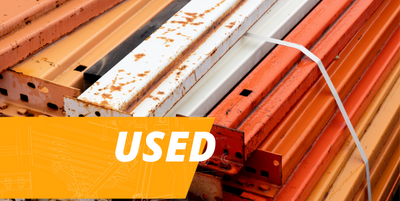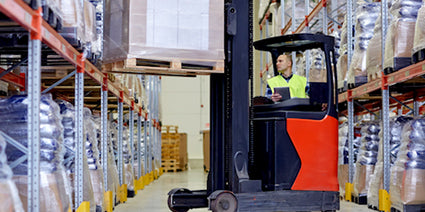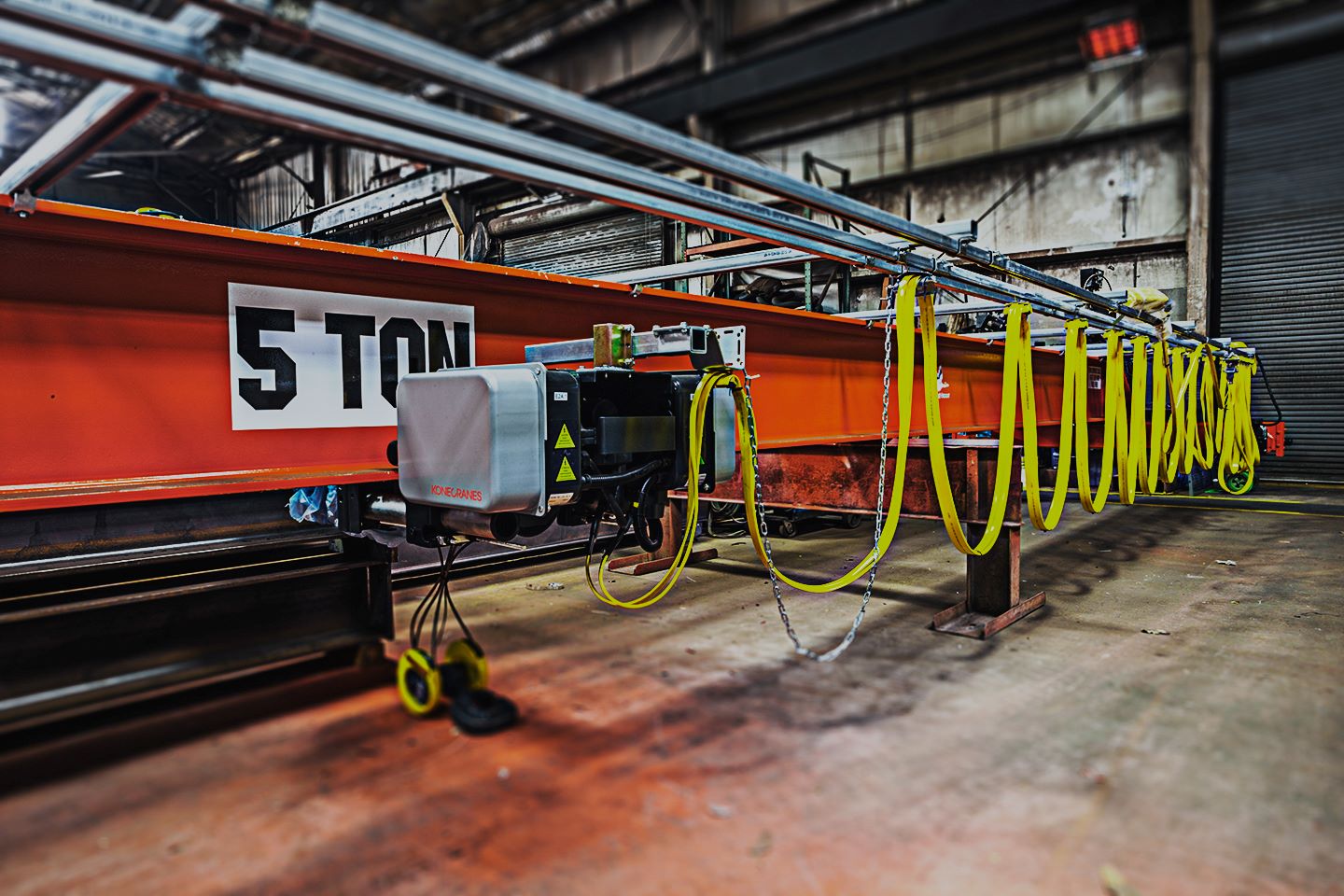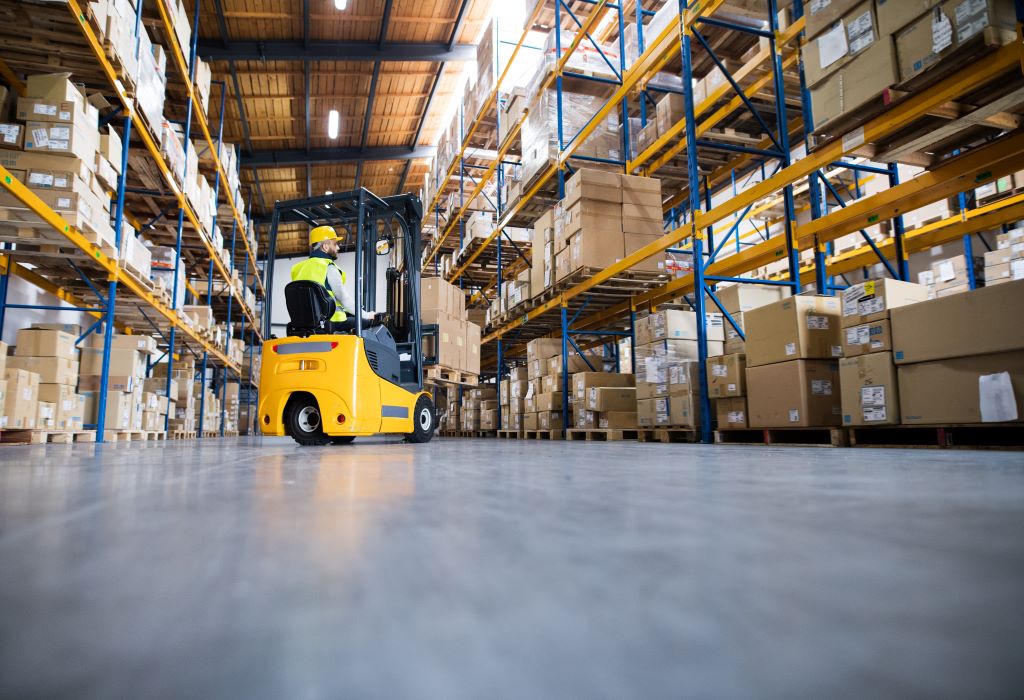Your Cart is Empty
![All Types of Pallet Jacks and Their Uses [In Depth Guide]](http://hoj.net/cdn/shop/articles/pallet-jack-in-new-warehouse_1600x.jpg?v=1658178518)
All Types of Pallet Jacks and Their Uses [In Depth Guide]
A pallet jack (also known as a pallet truck) is an extremely useful piece of equipment commonly used in warehouses and other industrial applications.
Like a forklift, pallet jacks have two forks that can be inserted into the open space on the side of a wooden pallet. This space allows the two pallet forks to extend to the opposite side of the pallet, which are then used to lift the pallet and its load.
Because of pallet jacks' utility, many other storage bins have been designed similarly to standard pallets. Skids and other bulk storage containers are just a few examples.
Lift trucks usually have a weight capacity of 5,500 pounds. There are three main types of pallet jacks: manual, electric, and semi-electric. Let's go through each, including their sub-categories, so you are prepared to find and purchase the pallet jack that best meets your needs.
Why use a pallet jack instead of a forklift?
Pallet jacks have many advantages over forklifts. They are much less expensive, they are more compact, allowing them to be stored easily in a warehouse or a truck, they can often get to difficult locations easier than a forklift, they are easy to use, have a lower risk of causing damage or injury to equipment and people, and require much less maintenance than a forklift.
Pallet jacks can be used as an alternative to forklifts, although many warehouses will use both for different applications.
Manual Pallet Jacks
Manual pallet jacks are a straightforward, low-cost solution for your pallet transportation needs. They all feature a manual hydraulic pump used to lift heavy loads. As you pump the handle, the forks will lift higher and higher. Pallet jacks have smooth, well-oiled wheels, allowing for easy transportation.
Once you reach your desired location, first make sure all hands and feet are clear of the drop point and simply pull on the release lever - located on the handle - to lower the pallet. While incredibly useful and easy to use, pallet jacks can still cause injuries if proper safety precautions aren’t used.
According to a shocking OSHA report, from 2002-2017, 38 individuals were injured in pallet transportation accidents. As you would guess, most had to do with crushed fingers, hands, and other limbs.

General Purpose Manual Pallet Jacks
These are the most basic type of pallet jack. Their forks have a fixed width and are useful for basic warehouse pallet handling. Frequently seen in your everyday warehouse, this essential piece of machinery is commonly used with standard GMA pallets.
A GMA pallet is a pallet size and design standardized across the industry. Its dimensions are 48” x 40”.
Adjustable-Width Manual Pallet Jacks
This is certainly one of the most versatile hand trucks in this section. These have adjustable forks that can be made wider or more narrow to allow for the moving of many types of pallets. The adjustable fork feature makes these incredibly useful as they can transport pallets of different sizes without the need to buy multiple jacks.
Weigh-&-Go Manual Pallet Jacks
If you need to know the weight of the pallet you are moving, then a Weigh-&-Go (or scale) jack is a great fit. These allow you to skip the weighing step, which usually involves you transporting your load to a separate scale, removing the jack, then - after it’s weighed - picking it back up and transporting it to the final drop point. Instead of going through that process countless times a day, just use a weigh-&-go manual lift to move and weigh pallets simultaneously to increase your work speed.
Multidirectional Manual Pallet Jacks
Typical manual pallet jacks move forward and backward and are steered by the large wheel directly below the handle. Multidirectional manual pallet jacks move like this while also being able to move from side to side when the jack is lifted to its highest level. This extra mobility becomes especially convenient when maneuvering in tight spaces or close to other objects like walls.
Quiet-Operation Manual Pallet Jacks
Some jobs that benefit from using a pallet jack are also jobs where noise needs to be kept to a minimum. Such locations include grocery stores, retail stores, hospitals, medical facilities, etc. For these cases, using a quiet-operation manual pallet jack is ideal.
These pallet jacks are made with materials meant to reduce sound, wheels that roll quietly, and special bushings in the pump assembly. This way, you can utilize the efficiency and convenience of a pallet jack without disturbing others around you.
Start-Assist Manual Pallet Jacks
A standard pallet jack would rely on the operator to push and pull the jack when starting to move from a complete stop. This can easily strain parts of the body - such as the lower back - unnecessarily.
These pallet jacks utilize the hydraulic pump to make pallet movement easier. The hydraulic pump engages and pushes the pallet jack forward when starting to move the load. This added help saves the operator's energy and allows them to move pallets for longer with less fatigue.
Corrosion-Resistant Manual Pallet Jacks
Your pallet jack needs may extend to physical locations that may not be ideal for a standard pallet jack. Such areas include locations where the jack is exposed to excessive moisture, cleaning products, or other corrosive chemicals.
As their name implies, Corrosion-Resistant Manual Pallet Jacks are built out of special materials to reduce the risk of corrosion in such environments.
Load-Control Manual Pallet Jacks with Brake
These pallet jacks have the functionality of a standard manual pallet jack with an added hand brake to slow down or stop the pallet jack from moving in case of an emergency. With heavy loads, you usually have to build up momentum to get them going at a decent pace.
If you had to stop quickly with a normal pallet jack, it would take considerable effort, and you might not be able to stop in time. The hand brake is especially useful for that reason and adds a layer of safety when using the pallet jack on a ramp or other inclined surface.
Load-Retaining Manual Pallet Jacks
Also known as box-guard pallet jacks, these pallet jacks have built-in steel supports attached to the frame. These supports stabilize the load and help keep everything in an organized stack. This adds an extra layer of safety, especially when moving a load made up of multiple pieces.
Roll-&-Reel Manual Pallet Jacks
Also known as coil pallet jacks, these jacks have triangular forks rather than the standard rectangular forks. The forks slant towards the middle, making the jack more capable of handling rolled or spooled goods. Examples of such goods are paper, wire, cable, and sheet metal.
Low-Profile Manual Pallet Jacks
These pallet jacks have forks that are closer to the ground (usually 2" or less in height). This low profile makes the jack more versatile. While a typical jack would be able to pick up a pallet from the front or back, this jack (with a fork width of 33") is low enough to pick up pallets from all four sides (this is why they are sometimes referred to as four-way pallet jacks). These are also sometimes called lowboy pallet jacks.
All-Terrain Adjustable-Width Manual Pallet Jacks
What if you need a pallet jack that can go on uneven ground instead of something like a flat warehouse floor? This is where all-terrain adjustable-width racks are useful. They have large pneumatic tires (as opposed to urethane, nylon, or rubber wheels) and are made of heavy-duty steel tubes. This provides the needed stability to move pallets on rough terrain or uneven surfaces like dirt, grass, gravel, or mud.
You can operate these in weather conditions like rain, sleet, and snow. In addition, they have forks with an adjustable width to accommodate the transportation of pallets of differing sizes. These are especially practical at construction sites, gravel pits, nurseries, and other outdoor applications. These jacks also come as gas or propane powered units which makes outdoor use even easier.
Manual Pallet Jacks with Foot Pump for Confined Spaces
These pallet jacks feature a foot pump for using the hydraulic pump that raises and lowers the forks. This is helpful when working in confined spaces where pulling back on the handle (the standard pumping method) is not possible or ideal. This includes operation close to walls or in corners and when working on a trailer or in another small or crowded area.
Fast-Lift Manual Pallet Jacks
Fast-lift pallet jacks are built to quickly raise the forks when carrying light loads such as a stack of empty pallets. This can improve efficiency when lighter loads are being moved. When used to lift heavier loads, the lift speed slows down.
Semi-Electric Pallet Jacks

Manual-Lift/Powered-Drive Pallet Jacks
These pallet jacks are also known as semi-electric pallet jacks. They are not as large and heavy as fully-powered pallet jacks but still provide a more effortless pallet transportation experience. The jacks have a built-in electric motor that powers the jack when moving from place to place. This makes it less taxing on operators using the pallet jack, especially over long periods of time or on sloped surfaces. The raising and lowering of the fork component are done manually like a standard manual pallet jack. The battery is rechargeable, and there is a display that shows the battery level for reference.

Powered Pallet Jacks
Powered pallet jacks (also known as electric pallet jacks) feature an electric motor with a rechargeable battery. Some of these have a platform that operators can stand on when transporting pallets. Other types carry the load while the operator walks (also known as walkie pallet jacks).
The motor powers the transportation of the jack as well as the raising and lowering of the forks. This conserves the operator's energy, allowing them to work for longer periods and across further distances at maximum efficiency. These are very beneficial when working on a ramp or other sloped surface or in large warehouses where goods must be transported long distances.
These are a must for large operations as they are quick and highly maneuverable in tight spaces.
Conclusion
Whatever your pallet handling and transportation needs are, there is likely a pallet jack for your specific situation. We supply each type of these pallet jacks, so feel free to reach out to our expert team with questions and inquiries or to get the assistance needed to buy pallet jacks of any type.








